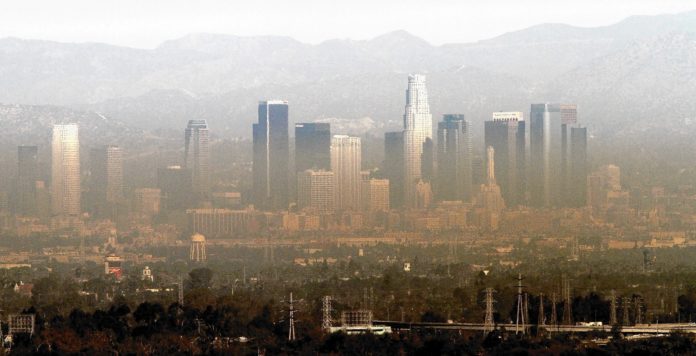
Tougher air pollution control strategies in California resulted in better lung health in children, a new study finds.
The findings, published this week in the New England Journal of Medicine, show that children in recent years breathed cleaner air and had stronger lungs compared to those who were studied two decades earlier. The improved health coincided with drastic reductions in pollution in the Los Angeles basin and surrounding areas as air quality regulators cracked down on emissions from tailpipes and smokestacks.
While the research focused on Southern California, the results suggest that other cities with dirty air may see a health boost with a cleanup effort, said the study’s lead author, Dr. Jim Gauderman, a professor of preventive medicine at the University of Southern California’s Keck School of Medicine.
Since pollutants such as particulate matter and nitrogen dioxide tend to be higher in cities, “reducing those pollutants should lead to improved health for children living in any urban environment,” the researchers wrote. “If these improvements [in lung function] carry through to adulthood, we would expect to see a reduction in their lifetime risks of cardiovascular disease and respiratory disease.”
Smog was first documented in Los Angeles during World War II when a thick haze reduced visibility to three city blocks and irritated residents’ eyes. For decades, the city struggled with air pollution. As LA’s population grew, so did the number of vehicles on the road. In the 1970s, unhealthy air was recorded more than 200 days a year. The air was so bad that it blotted out the San Gabriel Mountains and children couldn’t play outside when health advisories were in effect. Air quality has since improved thanks to stricter emissions rules for cars, trucks, ships and factories.
For the new study, Dr. Gauderman’s team tracked the lung development of more than 2,000 children in five Southern California communities beginning in the mid-90s. The researchers traveled to schools and asked children to blow into a device that measures how strong their lungs are and how much air they can exhale in one second. This test was run three times throughout the study, once when the children were 11, and again when they were 13 and 15. Air quality stations were also placed in the five communities, taking continuous key measurements of the amount of pollutants during the time of the study.
After the 20 years of research, the study found that as air pollution decreased, lung function and strength in the children of this age group increased. Even with varying factors such as age, gender, ethnicity, height, respiratory illnesses, etc. taken into consideration, the results were still the same. “We saw pretty substantial improvements in lung function development in our most recent cohort of children [between 2007-2011],” said Dr. Gauderman.
Specifically, the researchers found that exposure to two harmful pollutants, nitrogen dioxide and particulate matter, of a diameter under 2.5 microns (PM2.5), fell approximately 40 percent between 2007 and 2011 compared to 1994-98. In 2011 particularly, federal and state regulations on pollutants made a difference, as nitrogen oxide concentration fell below the federal standard throughout the LA basin. As a result of this drop, children with abnormally low lung function at age 15 fell from almost eight percent between 1994-98, to 6.3 percent in 1997-2011, to finally 3.6 percent of children between 2007-2011. Children’s lungs also grew faster as air quality improved; children in the 2007-2011 bracket experienced 10 percent greater lung growth than those from 1994-1998.
“Reduced lung function in adulthood has been strongly associated with increased risks of respiratory diseases, cardiovascular diseases, and premature death,” Dr. Gauderman said. “Improved air quality over the past 20 years has helped reduce the gap in lung health for kids inside, versus outside, the LA basin.” These benefits from cleaner air prove to be life-long, according to Dr. Gauderman, as overall lung development improved during these key stages of childhood. Adults who grew up during times of poorer air quality were less likely to rebound, however, suggesting just how vital clean air is to long-lasting lung health.
Most importantly, the study found that all children benefit from improved air quality. Lung development for children with asthma improved twice as much as those living in areas with poorer air quality. Children without asthma also showed improvements in lung capacity, despite differences in education, ethnicity, tobacco exposure, pet ownership, and various other factors that affect lung development.
The new findings come on the heels of a separate study which found that traffic-related pollution harms children’s brain development and may have long-term consequences for intelligence and academic performance.
